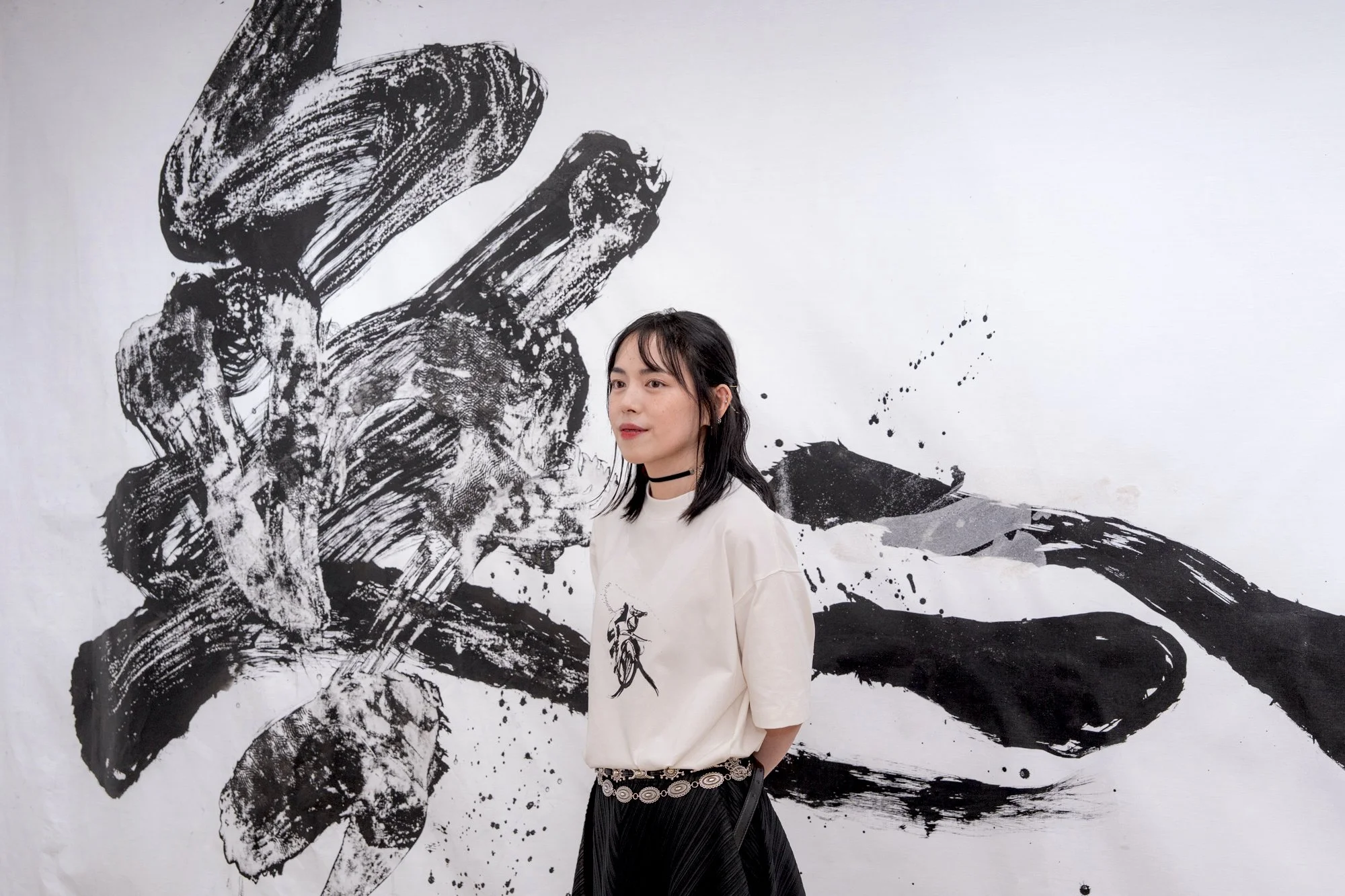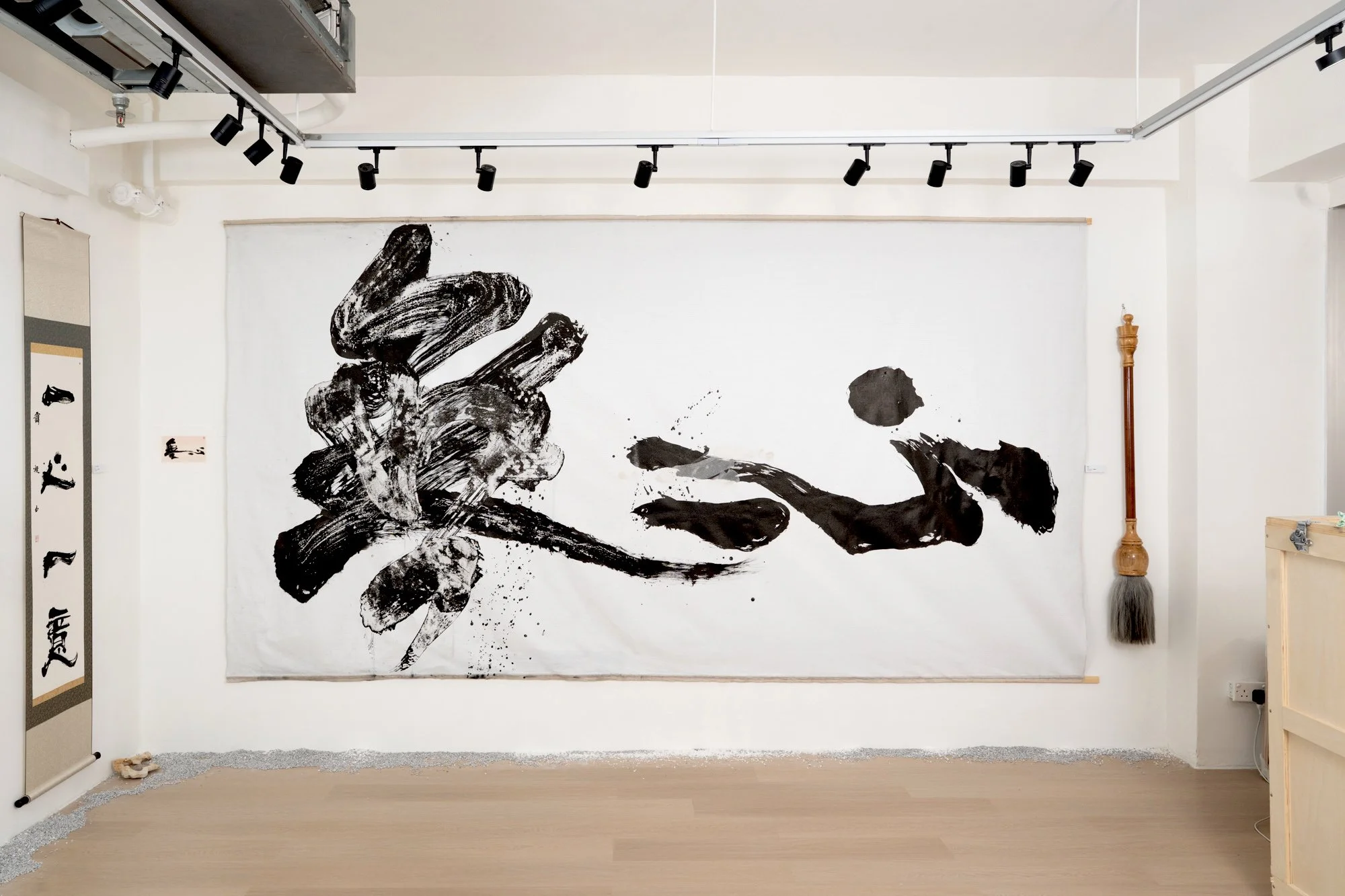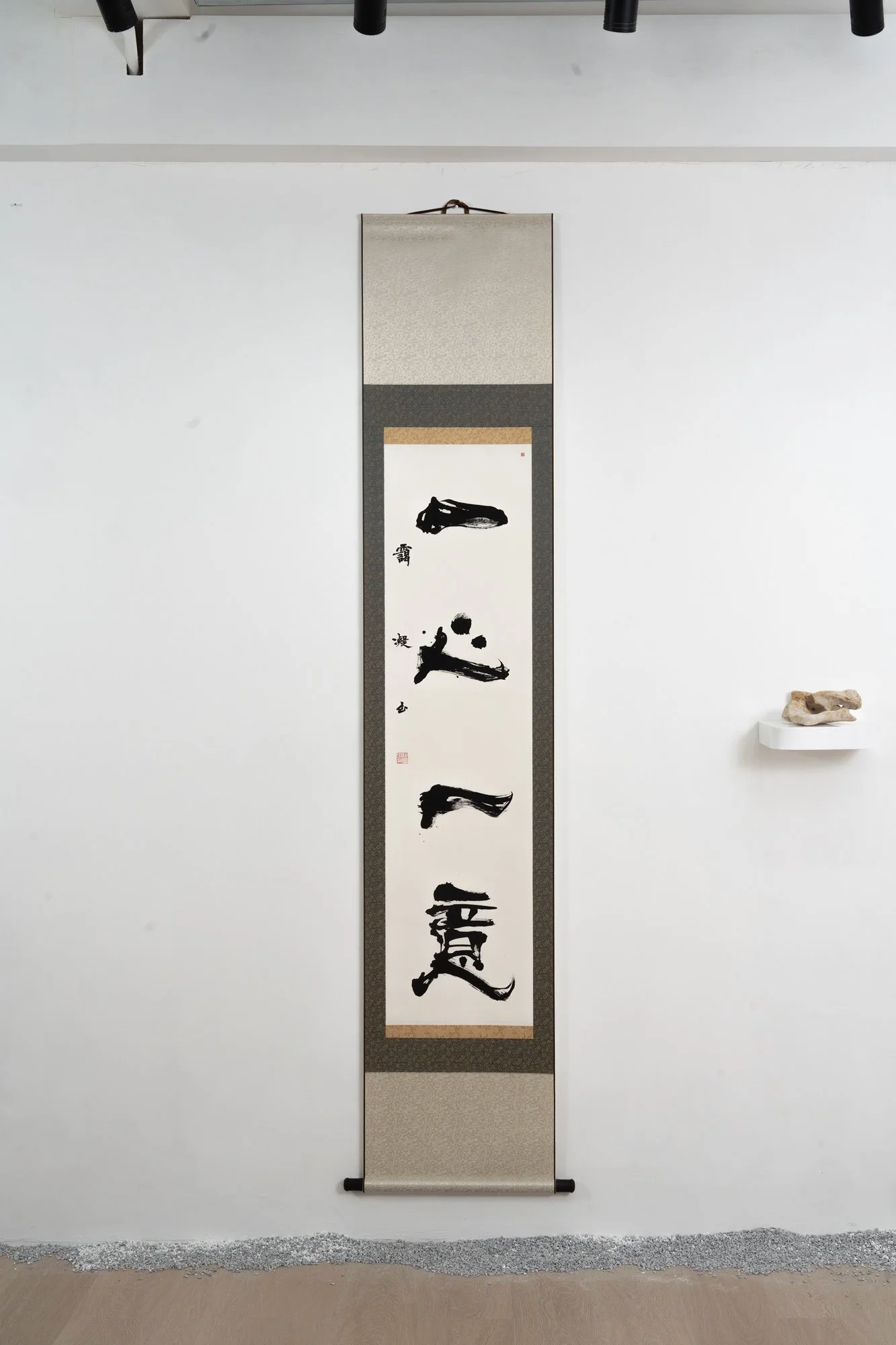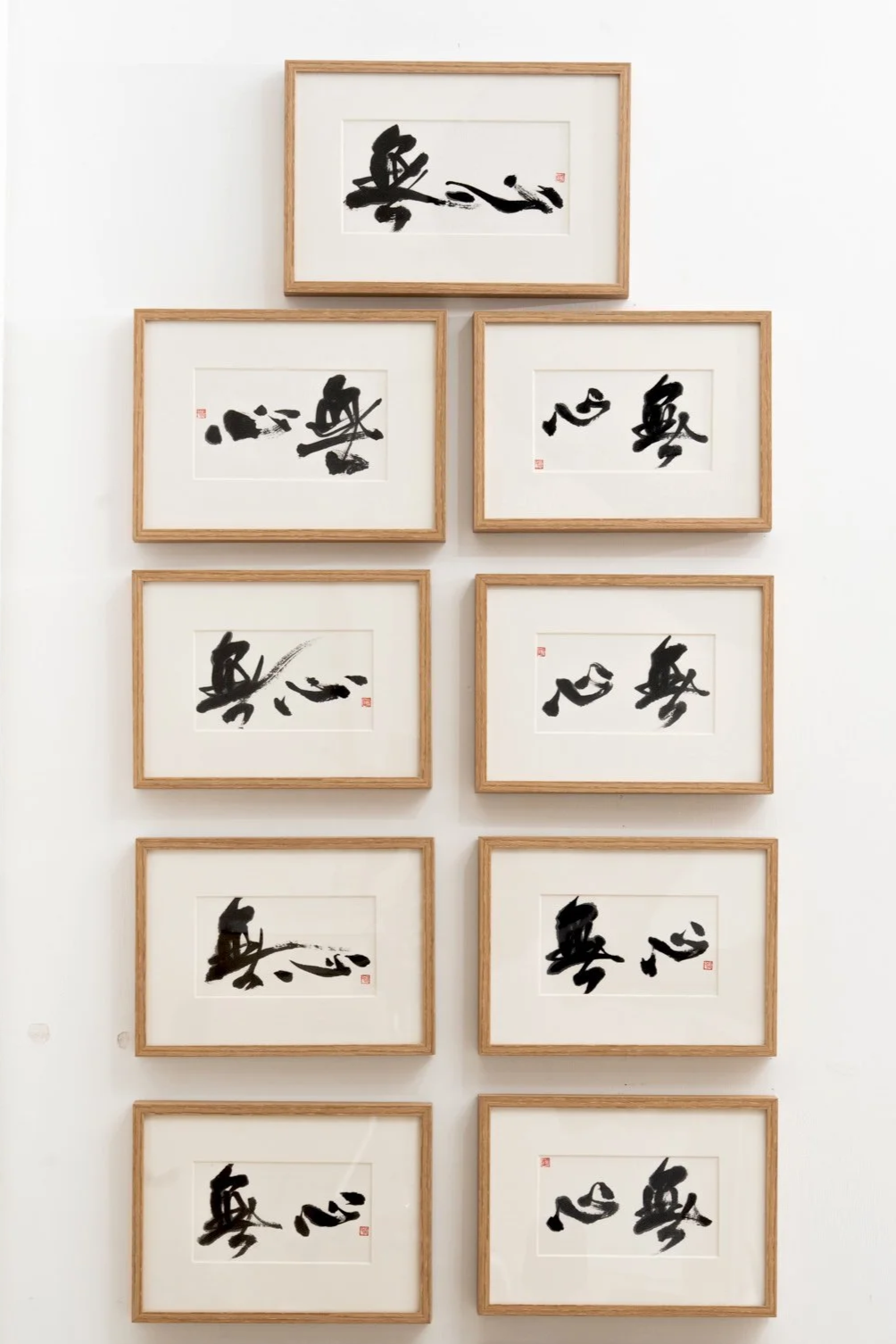Ep1. Chan Oiying
Artist Chan Oiying
What is the intended experience for viewers visiting your solo exhibition? Is there a particular emotion or reflection you hope they take away?
When viewers visit my solo exhibition, I hope they not only appreciate the visual beauty of my calligraphy art but also experience a sense of relaxation and emotional relief. My intention is for the exhibition to serve as a space where people can reflect on their own lives and perhaps find new perspectives or solutions to the things that have been bothering them recently. Inspired by Buddhist teachings and the comforting words of Masuno-san, I wish for my audience to interpret the works in their own way, to search for calmness within, and to leave feeling more at ease and better than when they arrived. Ultimately, I want my art to offer not just aesthetic pleasure, but also a moment of personal peace and reflection.
無心 mindlessness, 2025
悟 Understand, 2025
The exhibition merges calligraphy, Buddhism, and Japanese garden elements from the book 禅の庭 “Zen Gardens vol. IV” by Shunmyo Masuno. How did you translate these abstract ideas into visual form?
The reason why I put Masuno-san’s book here is because he is a great master in garden design, and was a major inspiration for me in this exhibition. I wanted the exhibition area to combine the aesthetic of 枯山水 (Karesansui), so I placed sand and rocks in the space together with my artworks. On the calligraphy itself, you can also see traces of garden landscapes—sometimes, you can imagine the strokes of the words as drops of water, or even as sand.
Through my works, I try to visually interpret Buddhist and garden philosophies with calligraphic strokes that suggest concepts like presence, change, and tranquility. I use abstract forms and “shapes like water” to evoke the meditative qualities of Zen gardens, as well as the spiritual messages found in Buddhist teachings. These elements are very important to me because I want to create a calming atmosphere, inviting viewers to pause, reflect, and “enjoy the presence.”
一心一意 Single-minded, 2025
Were there any particular pieces in this exhibition that were especially challenging or meaningful to create? If so, why?
Yes, the piece that was especially challenging in this exhibition was definitely the biggest one, the work with the word 無心. The brush I used for it is really heavy—4 kg even before adding any ink—and after the ink soaks in, it becomes even heavier. Controlling such a heavy brush is very challenging and requires a lot of strength. But it’s not just the physical challenge; when I write on such a large canvas, all I see is white. On a smaller canvas, I can predict where the next stroke will go, but on a big canvas, it’s impossible to predict. All I can depend on is my experience and intuition. Every stroke is unpredictable, and I have to trust myself in the moment. Working on these large-scale pieces demands both physical effort and artistic mindfulness, so they are not only physically demanding but also deeply meaningful for me.
Your work is described to differ from traditional Chinese calligraphy practice. How do you view this opinion?
My work often stands apart from traditional Chinese calligraphy, and I understand why it’s seen that way. I choose to follow a path that prioritizes meaning over convention, even when it’s difficult or misunderstood. In a culture where traditional styles dominate, especially in Hong Kong and China, I persist in developing experimental, abstract, and expressive forms of calligraphy. This approach allows me to connect with viewers on a deeper level and invite them to experience calligraphy as a living, evolving art. Educating people about why I make these choices is essential to me—because I believe calligraphy can go beyond tradition to express new ideas, emotions, and ways of seeing.
Are there any other artists or calligraphers, past or present, who continue to inspire your work?
I continue to be inspired by many masters, both contemporary and ancient, especially those who dare to break through tradition. For example, Yuichi’s work has had a profound impact on me—his strokes are so bold and fat that sometimes you can hardly read the words. I love his works very much because he is one of the pioneers who encouraged me to push past the boundaries of traditional calligraphy. Influential Japanese calligraphers, both past and present, have also deeply shaped my vision and motivated my innovative approach to calligraphy. Their courage and creativity inspire me to pursue my own breakthroughs in my art.
Chan Oi Ying’s solo exhibition at No Idea Gallery
Are there any other artists or calligraphers, past or present, who continue to inspire your work?
I continue to be inspired by many masters, both contemporary and ancient, especially those who dare to break through tradition. For example, Yuichi’s work has had a profound impact on me—his strokes are so bold and fat that sometimes you can hardly read the words. I love his works very much because he is one of the pioneers who encouraged me to push past the boundaries of traditional calligraphy. Influential Japanese calligraphers, both past and present, have also deeply shaped my vision and motivated my innovative approach to calligraphy. Their courage and creativity inspire me to pursue my own breakthroughs in my art.
Can you share more about your experience practicing calligraphy in Japan? Are there any meaningful moments?
That's a really good question. Most people may think that the Japanese would not give out their best to foreigners, but my experience was completely different. While I was studying calligraphy in Japan, I found my teacher to be incredibly generous—he taught me everything he knew and treated me like family. This unexpected kindness and openness really changed my understanding of both calligraphy and myself. Through spending time with him, sharing tea, and having honest conversations, I realized that authentic engagement and sincerity are far more important than simply copying someone’s work or technique. I learned that real artistic exchange comes from genuine communication and openness, and that has become a core value in my own practice.
無心 mindlessness, 2025
What advice would you give to young artists interested in both preserving tradition and pursuing innovation in their art?
I always advise young artists to write more and read more. Whether you are practicing traditional calligraphy or exploring modern styles like I do, I believe it's important to see more and level up your aesthetics. By immersing yourself in both study and practice, you can truly understand the difficulties and nuances of calligraphy. I advocate for a balanced approach—honoring tradition while also embracing innovation and new directions. In my own journey, this has helped me find deeper meaning in my art and allowed me to keep growing as an artist.
written by Kimberly Park, Ari Tang.







